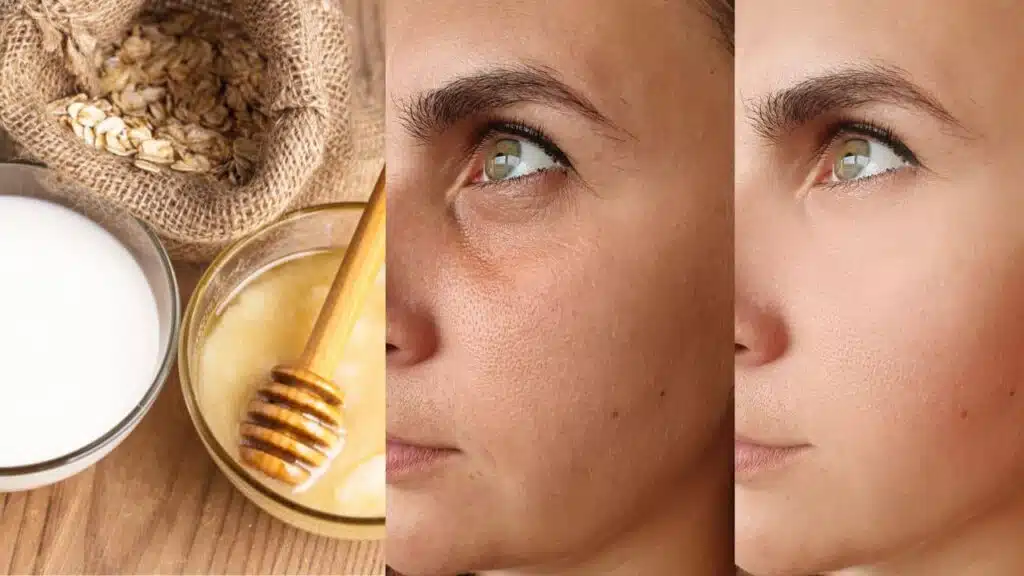How to Apply Raw Milk on Face Overnight?
In the quest for glowing and youthful skin, the beauty industry has witnessed a resurgence of interest in natural remedies, and raw milk stands out as a timeless tonic for skincare. With its abundance of nutrients, enzymes, and moisturizing properties, raw milk has been celebrated for centuries as a secret to achieving a luminous complexion. One of the most effective ways to harness its benefits is by applying raw milk on face overnight. In this comprehensive guide, we delve into the art of using raw milk as an overnight facial treatment to unlock its full potential.
Understanding the Benefits of Raw Milk for Skin:
Before we explore the application process, it’s essential to understand why raw milk is hailed as a skincare wonder. Raw milk is rich in lactic acid, a gentle exfoliate that helps remove dead skin cells and impurities, revealing smoother and brighter skin underneath. Moreover, it contains vitamins A, D, and B6, which nourish the skin and promote cell regeneration, leading to a youthful and rejuvenated appearance. Additionally, the natural fats present in raw milk act as excellent moisturizers, leaving the skin soft, supple, and hydrated.
Side effects of raw milk on the face
While raw milk can offer numerous benefits for the skin, it’s also essential to be aware of potential side effects that may arise from its application on the face:
- Bacterial Contamination: Raw milk may harbor harmful bacteria such as Salmonella, E. coli, and Listeria, which can lead to skin infections and other health issues. Without pasteurization, which kills bacteria, there is a risk of transferring these pathogens onto the skin, especially if the milk comes from unsanitary sources.
- Allergic Reactions: Individuals with lactose intolerance or dairy allergies may experience adverse reactions upon applying raw milk on face. Symptoms can include redness, itching, swelling, and even hives. It’s crucial to perform a patch test before using raw milk extensively on the skin to avoid allergic reactions.
- Skin Irritation: Raw milk contains natural acids, such as lactic acid, which can act as exfoliates. While beneficial for many, these acids may cause irritation, redness, or sensitivity in individuals with particularly sensitive skin. Overuse or leaving raw milk on the skin for extended periods, especially overnight, may exacerbate these effects.
- Acne Aggravation: For some individuals, the fats present in raw milk may clog pores and exacerbate acne breakouts, particularly for those with oily or acne-prone skin. While raw milk’s antibacterial properties may initially seem beneficial for acne, its comedogenic nature can lead to pore blockages and further inflammation.
- Sun Sensitivity: Some compounds in raw milk, such as lactic acid, may increase skin sensitivity to sunlight. Prolonged exposure to UV rays without adequate protection can lead to sunburn, premature aging, and an increased risk of skin cancer. It’s crucial to use sunscreen and protective clothing when incorporating raw milk into your skincare routine, especially if you plan to apply it during the daytime.
- Unpleasant Odor: Raw milk, particularly if not fresh, may develop an unpleasant odor due to bacterial growth. Applying milk with a foul smell to the face can be unpleasant and may not yield desirable results.
To moderate these potential side effects, it’s essential to exercise caution when using raw milk on face. Consider opting for pasteurized milk or dairy alternatives if you’re concerned about bacterial contamination or allergic reactions. Additionally, perform a patch test and monitor your skin’s response before incorporating raw milk into your skincare regimen. If you experience any adverse effects, discontinue use immediately and consult a dermatologist for personalized advice and treatment.
Preparation and Application:
Choose High-Quality Raw Milk: Opt for organic, grass-fed raw milk sourced from trusted sources to ensure purity and effectiveness. Avoid pasteurized or homogenized milk, as the heating process may diminish its nutrient content.
Cleanse Your Face: Before applying raw milk on face, cleanse your face thoroughly to remove makeup, dirt, and excess oil. Use a gentle cleanser suitable for your skin type and pat dry with a clean towel.
Pour Raw Milk into a Bowl: Pour a sufficient amount of raw milk into a clean bowl. You can adjust the quantity based on your preference and the area of your face you intend to cover.
Application Process: Using clean fingertips or a cotton ball, gently apply the raw milk on face, avoiding the delicate eye area. Massage the milk in circular motions, ensuring even coverage across your skin. Take your time to allow the nutrients to penetrate deeply.
Leave It Overnight: After applying the raw milk on face, leave it on your face overnight to allow maximum absorption and efficacy. Avoid rinsing it off, as prolonged contact with the skin enhances its benefits.
Tips for Enhanced Results for raw milk on face:

Patch Test: Before applying raw milk on face, conduct a patch test on a small area of your skin to check for any adverse reactions or allergies.
Consistency is Key: Incorporate raw milk into your skincare routine consistently to experience long-term benefits. For optimal results, use it two to three times a week.
Hydrate and Moisturize: Follow up with a gentle moisturizer in the morning to lock in the hydration and further nourish your skin.
Conclusion:
In the realm of skincare, the simplicity and value of raw milk on face as an overnight facial treatment are matchless. By harnessing its nutrient-rich composition, you can unveil a radiant and glowing complexion that exudes vitality and youthfulness. Remember, the key lies in consistency and patience. Embrace the ancient wisdom of raw milk, and let its transformative power illuminate your skincare journey.
FAQs
Can I leave raw milk on face overnight?
Yes, you can leave raw milk on face overnight. However, it’s essential to consider your skin type and sensitivity. While many people find overnight application beneficial, others may experience irritation or adverse reactions. It’s advisable to conduct a patch test and monitor your skin’s response before leaving raw milk on your face overnight.
How much time can we apply raw milk on face?
The duration of raw milk application on the face can vary depending on individual preferences and skin tolerance. Some people prefer to leave raw milk on their face for 15-20 minutes as a quick mask, while others choose to apply it overnight for maximum absorption and benefits. It’s recommended to experiment with different durations and observe how your skin responds to determine the ideal time for you.
What are the disadvantages of applying raw milk on face overnight?
While raw milk can offer several benefits for the skin, there are also potential disadvantages to consider when applying it overnight:
- Risk of bacterial contamination.
- Potential allergic reactions.
- Skin irritation or sensitivity.
- Aggravation of acne.
- Increased sun sensitivity.
It’s essential to weigh these potential disadvantages and consider your skin’s unique needs before incorporating raw milk into your overnight skincare routine.
How do you get glowing skin with raw milk?
To achieve glowing skin with raw milk, follow these steps:
- Cleanse your face thoroughly.
- Apply raw milk evenly to your face using fingertips or a cotton ball.
- Massage gently in circular motions to promote absorption.
- Leave the milk on your face for a suitable duration, depending on your preference and skin sensitivity.
- Rinse off with lukewarm water and pat dry.
- Follow up with moisturizer to lock in hydration.
Consistent use of raw milk as part of your skincare routine can help nourish and hydrate the skin, leading to a glowing complexion over time.
What can I mix with raw milk for the face?
You can enhance the benefits of raw milk for the face by mixing it with various natural ingredients:
- Honey: Moisturizes and soothes the skin while providing antibacterial properties.
- Turmeric: Has anti-inflammatory and antioxidant properties, helping to brighten the skin and reduce blemishes.
- Oatmeal: Acts as a gentle exfoliant and helps to soothe irritated skin.
- Aloe vera: Soothes and hydrates the skin while promoting healing and reducing inflammation.
- Rosewater: Refreshes and tones the skin, leaving it feeling rejuvenated and revitalized.
Experiment with different combinations to find the one that works best for your skin type and concerns. Always perform a patch test before applying any new ingredients to your face to avoid allergic reactions or irritation.







One Comment